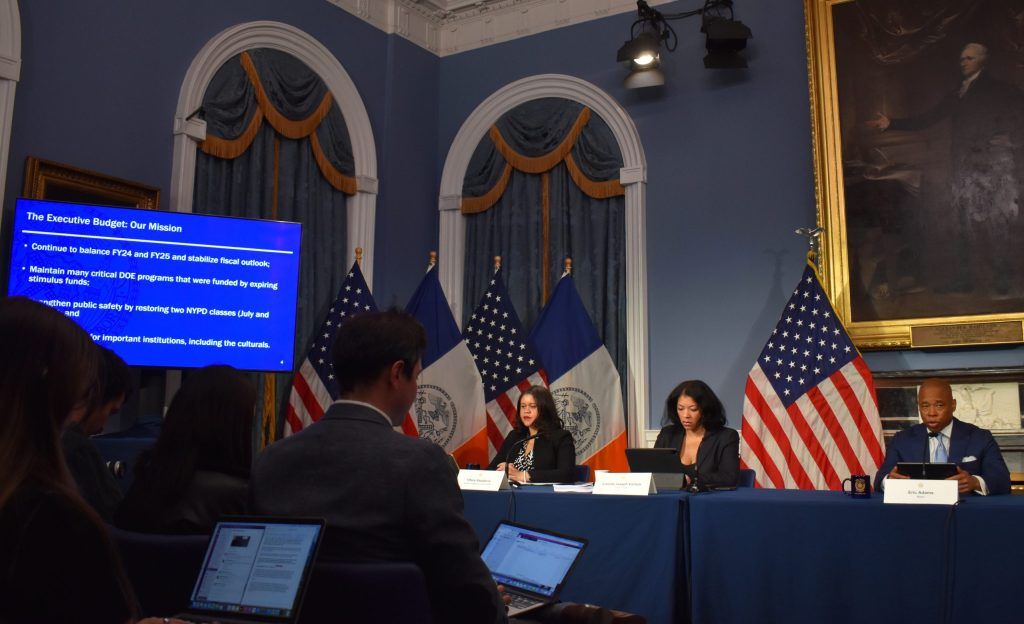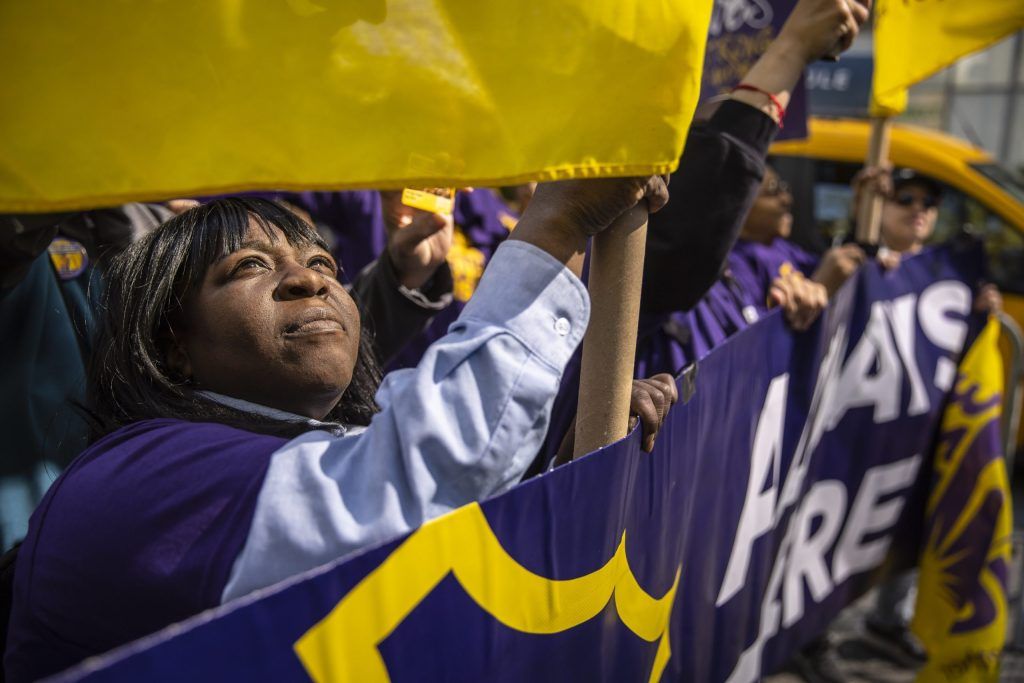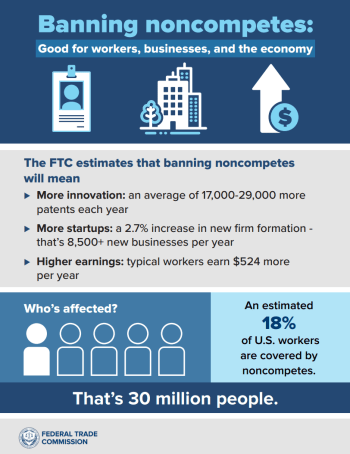Main Street Clarksville Events – Dean Harlem: Chief’s on Broadway – Main Street Media of Tennessee
Main Street Clarksville Events – Dean Harlem: Chief’s on Broadway Main Street Media of Tennessee
Efficient Radiator Repairs: Ensuring Your Vehicle’s Optimal Performance
The #1 source in the world for all things Harlem.
In the complex machinery of modern cars, the radiator is a dependable defender whose role goes much beyond controlling temperature. Situated in the core of the cooling system, the radiator plays a crucial role in dispersing surplus heat produced by the engine, guaranteeing peak efficiency and durability. Without it, the engine would give way to…
The post Efficient Radiator Repairs: Ensuring Your Vehicle’s Optimal Performance appeared first on Harlem World Magazine.
An enormous hot dog has taken up residence in the middle of Times Square

Let us be frank, we kind of love this new sculpture in Times Square: a 65-foot-long hot dog in a bun drenched in mustard that launches confetti in the air every day at noon. When it comes to outdoor art, this is by far the oddest sculpture we’ve seen around town in the last few months.

Called “Hot Dog in the City,” the giant addition to the Times Square landscape comes courtesy of Brooklyn-based artists Jen Catron and Paul Outlaw, who were commissioned by Times Square Arts.
The work “paints a unique portrait of America,” reads an official press release. Specifically, the duo of artists hopes the sculpture will entice folks to talk about “the patriarchy of meat-eating,” what meat production in the U.S. entails, the politics of street vending, capitalism, immigration and more.
To drive the point home further, the debut of the hot dog will be accompanied by a slew of public programs from now through June 13, including a “hot dog wrestling match” (we’re not sure what that means, but it sure sounds fun), debates about condiments, a very odd-sounding beauty pageant involving dogs and a qualifier for Nathan’s Famous International Hot Dog Eating Contest among others. You can learn more about the roster of events right here.
In case you were wondering how the idea for such a unique art piece even came about, you should know that Catron and Outlaw’s work has been dealing in similar matters for years now. According to the press release, the two once produced a dinner party on hydraulics, a fish fry truck that made its way around NYC and giant mechanized ice cream sundaes. The huge hot dog suddenly sounds so… on brand?

Every day at noon, hydraulics will propel the hot dog straight up and a built-in confetti canon will shoot the paper scraps up in the air. Woohoo!
You’ve got until June 13 to see the enormous wiener live, so get to Times Square ASAP.
Taking the temperature: Mayor Adams’ new climate budgeting process

New York City has taken preventative measures to integrate climate targets into the budgeting process, following pent-up frustration over delayed reactions to the ever-unstable climate crisis. Mayor Eric Adams announced the initiative during his executive budget rollout last Wednesday, April 24.
For 15 years, New York City has been directly impacted by the consequences of climate change, city officials said. The city has seen record-breaking heat waves, increased rainfall, rising sea levels, and tidal flooding, often marked by historic events like Hurricane Sandy in 2012, Hurricane Ida in 2021, and the eerie yellow-tinted skies last year caused by air pollution from Canadian wildfires. The crises are linked by their disproportionate impact on “environmental justice areas” in historically vulnerable Black and brown neighborhoods, particularly in Central Brooklyn, Upper Manhattan, Southeast Queens, and the Bronx.
Both the Intergovernmental Panel on Climate Change (IPCC) and the New York City Panel on Climate Change (NPCC) urge “aggressively” reducing emissions and adapting to climate change conditions in their latest reports.
“This is the greatest city on the globe and resiliency is the cornerstone and foundation of who we are,” said Adams at the executive budget press conference last week.
The city’s $111.6 billion executive budget for Fiscal Year (FY25) 2025 does a combination of good and controversial things. It recommited $514 million to Department of Education (DOE) programs, like pre-K and 3-K, that previously faced cuts and were supported with “temporary stimulus money,” said the city. It also restored $22.6 million for cultural institutions—including museums, performing arts centers, historical societies, zoos, and botanical gardens—which were also facing budget cuts. Public libraries were still left out.
For public safety, the budget earmarks $62.4 million to beef up the police force on city streets and subways, as well as two more police academy classes this year. The city estimates there will be a total of 35,000 additional uniformed officers in the coming years. Adams also reduced asylum seeker costs by $586 million from last year’s and this year’s budget. He attributed these “savings” to the 30- and 60-day shelter notices and reduced per diem household costs, which he categorized as “tough choices” to make.
New York City is aiming to be among the global cities to establish a climate budgeting office, following places like Oslo, London, and Mumbai. The Mayor’s Office of Management and Budget (OMB) Director Jacques Jiha spearheaded the Environmental Sustainability and Resiliency Task Force within that office to lead the development and implementation of climate budgeting.
RELATED: Gov. Hochul’s budget is in—here’s what NYC got
“We are the nexus of everything taking place in city government so from my perspective it was appropriate for it to be at OMB because we can see and track all the investments,” Jiha said in a budget session, “and we can make sure that the investments the city makes has the appropriate impact on the environment.”
The plan is to align capital and budget decisions with the overall goal of reaching net-zero gas emissions by 2050, and creating resiliency plans that accommodate extreme heat and flooding.
Those directives entail requiring climate-specific information with new funding requests and capital projects as well as prioritizing sustainability projects: electrification in buildings and vehicles, renewed roof coatings to cut indoor temperatures, stormwater management and upgraded catch basins, expand tree canopies, renewable diesel for ferries, more staff to carry out Local Law 97 (LL97) building efficiency compliance, a study of Rikers Island energy infrastructure, an offshore wind hub at South Brooklyn Marine Terminal, and a climate innovation hub at Brooklyn Army Terminal.
So far the city’s assessment concluded that out of the $97.7 billion in capital projects funding, $65.7 billion potentially impacted net-zero emissions goals, with 24% of that already supporting green infrastructure and 8.4% supporting gas powered equipment.
According to the city, “a significant portion of the city’s affordable housing stock and more than one million small and mid-sized buildings” are especially vulnerable to energy inefficiencies because they usually use natural gas for heat and hot water, which is expected to continue to burn because many of those buildings don’t have to comply with LL97 emissions targets. There’s also the issue of the state running behind on building large-scale renewable energy projects.
Though disappointed with other elements of the city budget, environmentalist groups like New York League of Conservation Voters (NYLCV) and Climate Works for All were tentatively excited about the climate budgeting process.
“While the release of the new Climate Budgeting publication is welcome news, when it comes to on-the-ground policy, this budget takes us in the wrong direction,” said NYLCV in a statement. They criticized the current executive budget for cuts to the Department of Parks and Recreation and the city’s curbside composting program.
Faiza Azam, a Climate Works for All spokesperson, found the announcement encouraging. Azam said the organization is adamant about the need to address climate impacts by restoring cuts to and fully funding the Department of Citywide and Administrative Services’ energy resilience projects, dedicating $600 million for green schools and funding for more LL97 staff to decarbonize buildings.
“It’s not enough to restore cuts to education without investing in green and healthy public schools, so our students, teachers, and school staff can breathe clean air,” Azam said in a statement. “And it’s not enough to claim a brighter future where every child is able to thrive when Black and Brown youth continue to weather the worst effects of the climate crisis and remain most vulnerable to record-breaking storms, heat, and wildfire smoke.”
Ariama C. Long is a Report for America corps member and writes about politics for the Amsterdam News. Your donation to match our RFA grant helps keep her writing stories like this one; please consider making a tax-deductible gift of any amount today by visiting https://bit.ly/amnews1.
The post Taking the temperature: Mayor Adams’ new climate budgeting process appeared first on New York Amsterdam News.
Connection Events – Dean Harlem: Chief’s on Broadway – Main Street Media of Tennessee
Connection Events – Dean Harlem: Chief’s on Broadway Main Street Media of Tennessee
Paid Juneteenth holiday among contract demands for SEIU security guards

A contract covering roughly 20,000 security guards in Service Employees International Union, Local 32BJ (SEIU 32BJ) expired at midnight on May 1 as members called on employers to retain their healthcare, increase their retirement benefits, raise their wages, and recognize Juneteenth as an official paid holiday.
Sitting across the negotiating table is the Realty Advisory Board on Labor Relations (RAB), as well as several private companies including Allied Universal that directly employ union members. They enlist SEIU 32BJ security guards to protect landmarks like the Statue of Liberty, Rockefeller Center and the 9/11 Memorial, along with local college campuses and shelters for the unhoused at a time when the city is experiencing mass student demonstrations and an influx of asylum seekers bused in from the southern border.
The Juneteenth demand stands out as critical for what Tammy Murray—the Stockholm Family Shelter’s security supervisor and union shop steward—calls an “overwhelmingly” Black and brown workforce. Being off on the federal holiday commemorating the country’s second independence day and freedom to enslaved peoples may feel particularly relevant for the legions of Black New Yorkers covered by a new contract.
“Everybody else has a holiday where they get paid but us,” said Murray. “It is the only holiday that we actually asked for, that we want in the contract. Because it means something to us. That’s our independence day.”
Sen. Kirsten Gillibrand (D-NY) lent her support to the union while also advocating for the Protecting the Right to Organize Act, better known as the PRO Act, to strengthen organized labor across the country.
“I am honored to stand with members of 32BJ SEIU,” said Sen. Gillibrand in a statement. “Anyone who has lived in NYC knows how critical security officers are to the safety of our communities. I want to thank these essential workers for their tireless work to keep our communities safe and for standing up for workers’ rights.”
NYC Comptroller Brad Lander also advocated for the union members’ demands.
“From New York’s most iconic buildings to our city’s shelters, 32BJ security officers are always there keeping us safe and serving New Yorkers,” he said. “As essential workers, they showed up for us throughout the pandemic and are now guaranteeing safe and secure places for asylum seekers to rest. I proudly stand with these workers because they deserve a fair contract that includes family sustaining wages, healthcare, and [the] ability to retire with dignity.”
There is currently little movement in the negotiations as of press time according to a SEIU 32BJ spokesperson. But the RAB is confident both sides will work things out. 1,300 SEIU 32BJ security guards are covered by the RAB contract.
“We have a great relationship with the union that has resulted in more than 30 years of uninterrupted labor peace,” said Robert Schwartz, RAB’s executive vice president in a statement. “We are looking to schedule additional negotiating sessions in the days ahead in the hope of reaching a fair agreement.”
Tandy Lau is a Report for America corps member and writes about public safety for the Amsterdam News. Your donation to match our RFA grant helps keep him writing stories like this one; please consider making a tax-deductible gift of any amount today by visiting https://bit.ly/amnews1.
The post Paid Juneteenth holiday among contract demands for SEIU security guards appeared first on New York Amsterdam News.
A moody Williamsburg speakeasy opens with Japanese quaffs and fried chicken

New Yorkers love a good speakeasy—our list of the 20 best speakeasy-inspired bars in NYC is spirited proof.
The clandestine cocktail-bar genre is getting a new entry in the form of Koi Bā, a Japanese-accented drinking den coming to Williamsburg ( 80 North 6th Street) on Wednesday, May 15.
RECOMMENDED: 7 NYC speakeasy concepts where you can also get great food
Owned and curated by Nem’s Japandi Bistro’s creator Supranee “Nem” Phramdang, the new Brooklyn bar will pay homage to Japanese flavors and “seasonal narratives,” with a 12-drink menu overseen by Beverage Director Ricky Dolinsky. (There will also be Japanese craft beers, a thoughtfully curated sake repertoire and tasting flights of house whiskeys.)
On the cocktail list, you’ll find creations like the “Paper Crane,” a Paper Plane that took a trip to Tokyo (Japanese aged rum, Interboro amaro, yellow chartreuse and lime); the tiki-inspired “Blue Forest” (coconut-infused whiskey, pineapple, Kare spice, amontillado sherry, nutty sesame orgeat and egg white); and the Bellini-esque “Hana Akiri,” perfect for cherry blossom season with hibiscus-infused gin, fresh cucumber, lychee, nigori sake and a Pet Nat rosé. A “Smokey Toki” has some theatrical bartender flair: the duck fat-infused cognac cocktail with absinthe, fennel and mizuna syrup is smoked with a mix of wood chips and matcha, echoing the flavors of a classic green-tea smoked duck.
Speaking of food, there will be plenty of drinking snacks on offer, from fried chicken Karaage (with Sancho pepper honey, house hot sauce and Szechuan peppercorn) to “French Onion” Agedashi Tofu (served with broiled gruyere cheese) to a tartare (choice of tuna or salmon) topped with charred Negi, cured egg and yuzu kosho.
Japanese touches abound in the décor as well: an oversized Koi fish is the statement piece above the bar, and moody dim lighting pepped with pops of red neon makes it feel like you’ve stumbled into the alleys of Golden Gai.
Check out photos of Koi Bā’s cocktails and bar bites below:








FTC ruling could end noncompete agreements

The Federal Trade Commission (FTC) has issued a proposal to adopt a near-total ban on noncompete agreements (NCAs) between employers and workers.
The ban, which would end the prohibition on some workers being able to leave a job and get hired by another company in the same industry or to potentially start a company in that same industry, would go into force nationwide.
According to the FTC, 18% of the U.S. population––some 30 million people––have signed NCAs.
“Noncompete agreements bind about one in five American workers. That’s astounding,” FTC Commissioner Rebecca Kelly Slaughter said during her agency’s announcement of the decision. “And this is not limited to one sector of the economy or category of workers. Low and high wage workers, skilled and unskilled workers; this problem affects so many. And in fact, it really affects all of us. Even if no one in your family is subject to a noncompete agreement for their own employment, the record in our rulemaking proceeding makes clear: noncompetes prevent new business formation, slow innovation, and deprive consumers of the better products and better prices we expect from competitive markets.”
Unions applauded the announcement. The Teamsters took to X/Twitter to call the FTC proposal, “A BIG win for working families and a big defeat for predatory corporations!”
Studies have found that when employees sign NCAs it limits their ability to earn income, because they’re stuck working for one employer who has hired them based on the skillset they have for that specific industry. The National Bureau of Economic Research wrote that enforcement of NCAs can be detrimental to the economic prospects of Black workers because “Black individuals are less likely to migrate far away from their hometown, and they are less likely to migrate in response to earnings increases elsewhere. [T]hese differences predict that NCA enforceability will cause greater earnings penalties for historically disfavored workers.”
Even though legal action around NCAs are not often enforced, once an employee has signed one they are hesitant to do anything that might violate its clauses, the non-profit Economic Policy Institute found: “Most noncompete agreements never make it to court: workers assume they are valid, or workers can’t afford to take on the risk and expense of possible litigation. A typical employee who is reminded that they have signed a noncompete or receiving an intimidating letter from the employer’s legal counsel simply may accept that working for a competitor is not an option rather than taking the risk of being sued. This results in a chilling effect, as workers stay in their jobs regardless of the actual enforceability of their noncompete agreements.”
Noncompetes hinder economic progress
An April 23 FTC fact sheet assessed that noncompetes have stalled economic progress. Banning NCAs, the agency claims, will lead to a 2.7% increase in new businesses, the creation of more than 8,500 new businesses each year, and an estimated “$400-$488 billion in increased wages for workers over the next decade.”
The FTC rule will go into effect within 120 days of its publication in the Federal Register unless it is halted by legal challenges. The United States Chamber of Commerce, a pro-business group, has already said it will challenge the ruling. “Since its inception over 100 years ago,” the Chamber said in a statement, “the FTC has never been granted the constitutional and statutory authority to write its own competition rules. This decision sets a dangerous precedent for government micromanagement of business.”
The business lobbying group asserted that “67% of our respondents agreed that a near-total ban on noncompete agreements would have a negative impact on their business’s talent strategy and/or compensation strategy. Our survey found that employers would have to reduce the sharing of sensitive information with employees and reduce or defer compensation with employees should this ban take effect.”
Federal Trade Commission Chair Lina Khan claims that “Noncompete clauses keep wages low, suppress new ideas, and rob the American economy of dynamism, including from the more than 8,500 new startups that would be created a year once noncompetes are banned.”
The post FTC ruling could end noncompete agreements appeared first on New York Amsterdam News.
One of NYC’s premier Mexican chefs opens Esse Taco this week

We love some cheap tacos as much as any New Yorker, but there’s an added thrill when those deliciously filling, low-budget bites come from a lofty source. In Esse Taco‘s case, that source is Enrique Olvera, the chef-restaurateur known for his acclaimed, high-minded Mexican cooking at the three-Michelin-starred Pujol in Mexico City as well as at Cosme and Atla in Manhattan.
RECOMMENDED: The 22 best tacos in NYC, from traditional taquerias and trendy hot spots
At his vibrant new Brooklyn taqueria with Santiago Pérez (of Casamata hospitality group)—which opens at 219 Bedford Avenue and North 5th Street on Thursday, May 2—the standing-only digs are leagues more casual than at Olvera’s other World’s 50 Best dining rooms, but the menu is thoughtfully focused.
The tortillas are made with heirloom corn, nixtamalized and hand-pressed on-premises. And tacos hover around the five-buck mark: rib-eye steak with salsa guacachile ($5.95), citrus-marinated grilled chicken with spicy Xnipec-style pickled onions ($4.95), al pastor pork loin with pineapple butter ($4.95), and a mesquite-smoked oyster mushroom option with salsa tatemada ($5.45). There’s the option to make any one of the above “Gringa” with a flour tortilla in place of the traditional masa round, with added chihuahua cheese for a dollar extra.
Rounding out the taco-focused menu are sides like totopos with guacamole or a salsa trio, a range of beverages including tequila and mezcal margaritas, beer and refreshing agua frescas, and a fast-casual take on Olvera’s famed corn husk meringue from Cosme, one of the best desserts in New York City. Here, the dessert—which is made crunchy, ash-dusted meringue topped with a velvety corn mousse and vanilla cream—is smartly transformed into a mini ice cream sundae, just the thing to soothe after all those chile-fired tacos.
Check out photos of Esse Taco’s delicioso-looking offerings below, including those meaty tacos and that corn husk sundae:









